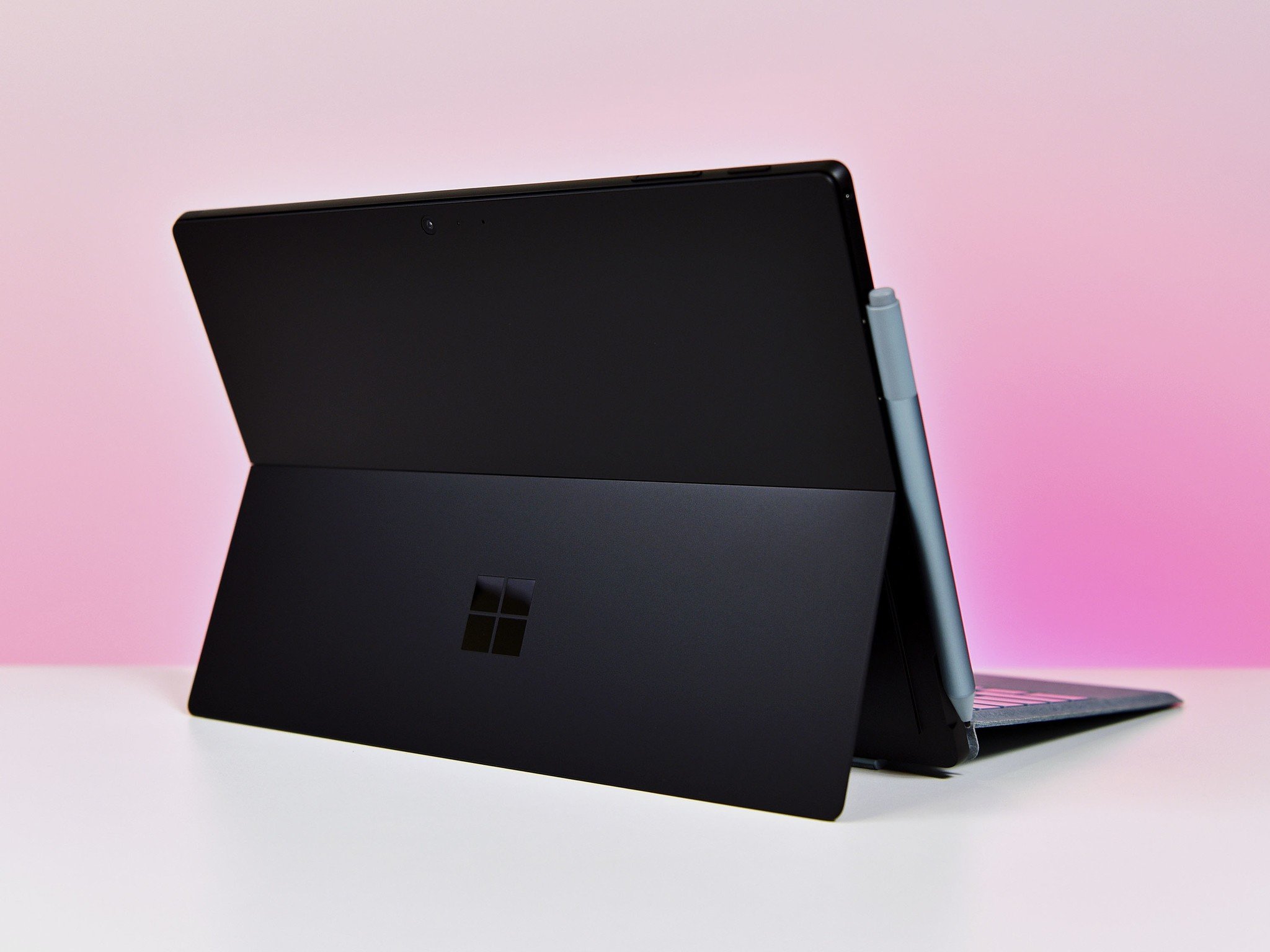
The Surface Pro is entering its sixth year in existence, so it seems relevant for a "Surface Pro 6 model" to match. While the older numbering system for the name has returned, the hardware remains mostly the same as 2017's Surface Pro, now dubbed the Surface Pro "fifth gen" by Microsoft.
Featuring a new jet-black color option and a bump to Intel quad-core processors, the Surface Pro 6 may not be revolutionary. But it's still the best at what it does.
About this Surface Pro 6 review
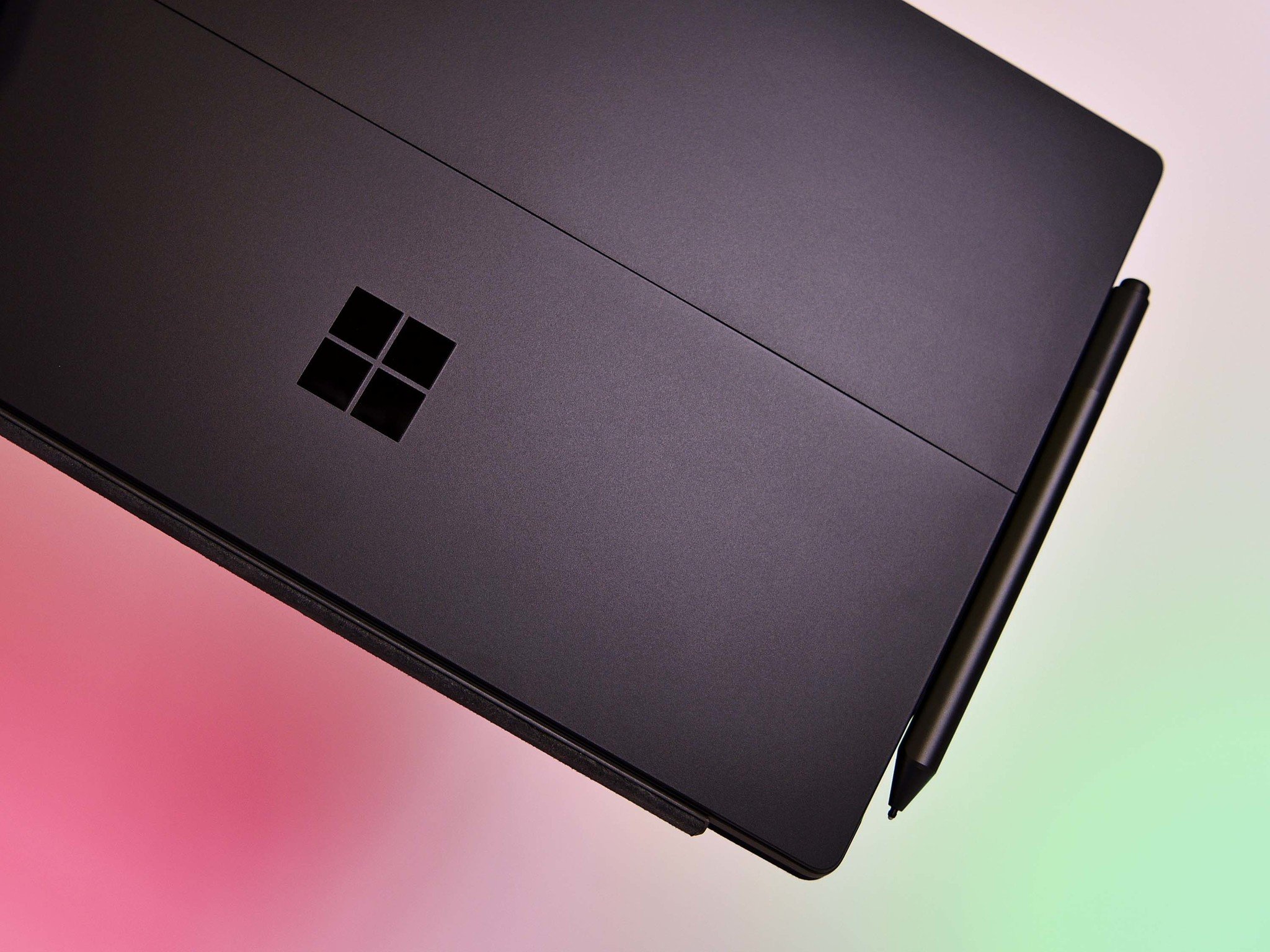
Microsoft supplied a loaner Surface Pro 6 for this review. The unit tested is black with an Intel Core-i5 8250U, with 8GB of RAM, and 256GB of storage priced at $1,199. The package also included a black Surface Pro Type Cover ($129) and black Surface Pen ($99) for a total of $1,427. Starting price of the new Surface Pro 6 is $899 (platinum only) for a Core i5 with 8GB of RAM and 128GB of storage and it maxes out with a Core i7, 16GB of RAM, and 1TB of storage for $2,299 in platinum (plus Type Cover and Pen).
Microsoft Surface Pro 6: What's new?

Compared to the 2017 Surface Pro, there are only two notable changes in the Surface Pro 6.
- New Intel 8th Gen processors – Jumping from dual-core to quad-core is a big deal for performance. With nearly double the multi-core executions, the new Surface Pro 6 is substantially faster (more than 67 percent faster, according to Microsoft) than last year's model. That's thanks to the Intel Core i5-8250U and Core i7-8650U processors now being used. Matching that is a new thermal solution to keep the heat at bay without running fans too loudly.
- Black color scheme - If you're new to the Surface Pro, you may not know that the original Surface Pro (2012) and Surface Pro 2 (2013) were only available in black. Microsoft shifted to "Surface grey" for Surface Pro 3, but now, a new all-black model is back for Surface Pro 6. Everything is blacked-out on the new Surface Pro 6 However, the regular platinum color is still available.
There are some other small changes including no $799 option for an Intel Core m3 or 4GB model. Instead, Surface Pro 6's entry model starts at $899 but doubles the RAM to 8GB and jumps to a stronger Core i5 processor. That model still comes with 128GB of storage but is $100 cheaper than last year's similar configuration, which was $999. Likewise, all the configurations are $100 cheaper than last year's Surface Pro.
Microsoft offset the $100 price drop by switching to a standard Windows 10 Home license for all models (except for school or enterprise purchases, which remain on Windows 10 Pro). Users can still upgrade to Windows 10 Pro through the Microsoft Store for a $99 license purchase.
There also seem to be some slight lower-level tweaks to Surface Pro 6. For instance, the instant-on feature combined with Windows Hello facial recognition is notably faster. Likewise, the solid-state drive (SSD) speeds for storage have also been substantially improved. To accommodate the new quad-core processors, Microsoft also redesigned the thermal solutions for both the Core i5 and i7 versions. Despite the increased core count, the i5 version is still fanless and silent.
All the latest news, reviews, and guides for Windows and Xbox diehards.
Due to Intel not making any Iris Plus option for 8th Gen 15W processors, the Core i7 Surface Pro 6 features Intel Graphics UHD 620 instead of the more powerful Iris Plus 640.
Finally, as of October 2018, Microsoft has not yet committed to a Surface Pro 6 with LTE support. For those who still want a Surface Pro with 4G LTE Advanced there is the Surface Pro (2017) with LTE, which became available in the spring of 2018.
Dual to quad
Microsoft Surface Pro 6 tech specs
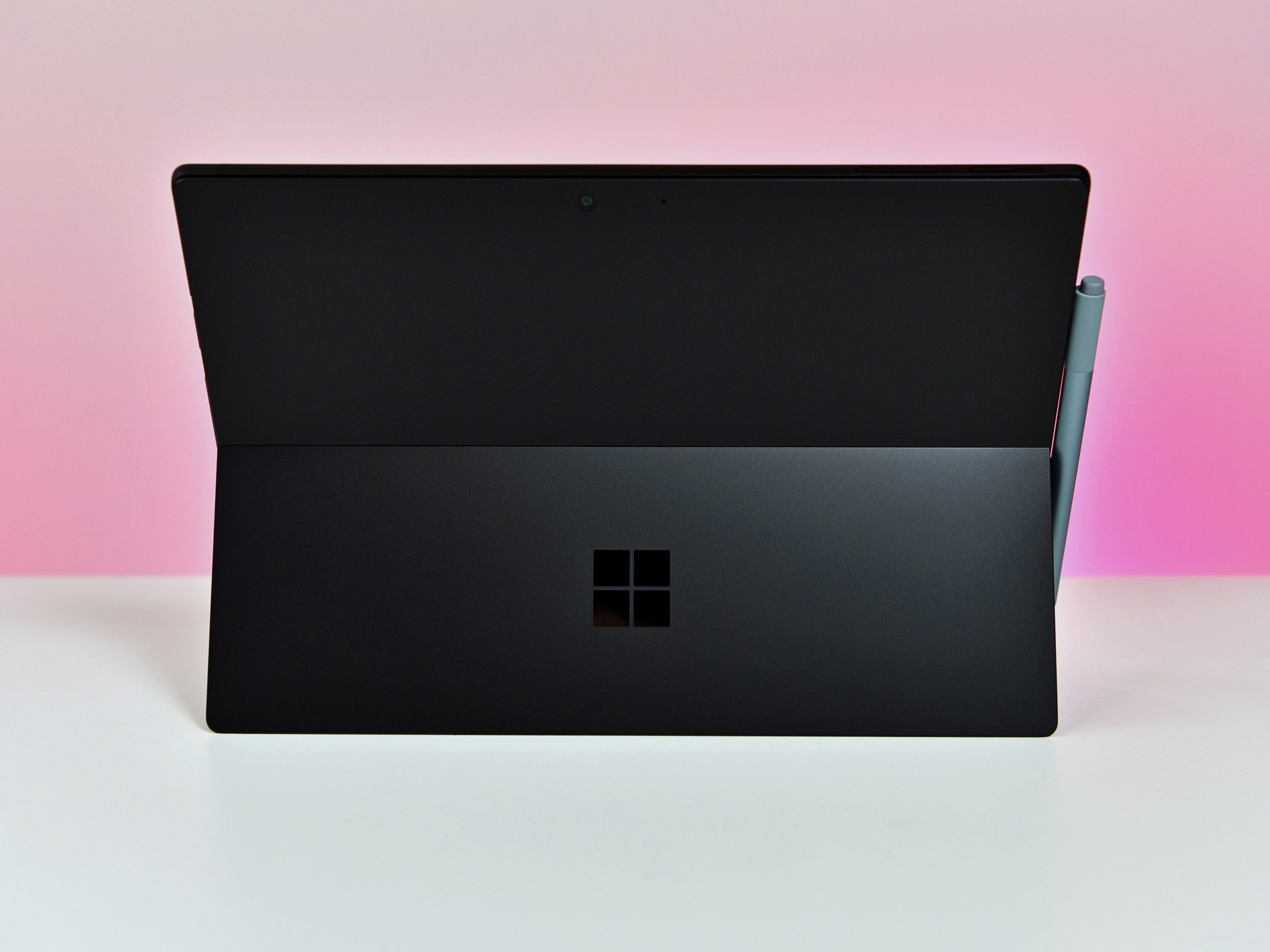
While the specifications have remained mostly unchanged from the 2017 Surface Pro, the configuration options have shifted slightly.
| Category | Specification |
|---|---|
| Colors | Platinum or black |
| Material | Magnesium |
| Display | 12.3-inch Pixel Sense display 10 point multi-touch |
| Display resolution | 2736 x 1824 (267 PPI) Aspect Ratio: 3:2 |
| Software | Windows 10 Home |
| Processor | 8th Gen Intel Core i5-8250U (quad-core) 8th Gen Intel Core i7-8650U (quad-core) |
| Storage | 128GB, 256GB, 512GB, or 1TB SSD |
| Memory | 8GB or 16GB RAM LPDDR3 |
| Graphics | Intel UHD Graphics 620 |
| Rear camera | 8.0MP autofocus camera with 1080p HD video |
| Front camera | 5.0MP camera with 1080p HD video Windows Hello face-authentication |
| Speakers | 1.6W stereo speakers with Dolby Audio Premium |
| Ports | One full-size USB 3.0 Mini DisplayPort Headset jack Surface Connect microSDXC card reader |
| Sensors | Ambient light sensor Accelerometer Gyroscope |
| Network | Wi-Fi: IEEE 802.11 a/b/g/n/ac compatible Bluetooth Wireless 4.1 technology |
| Security | TPM 2.0 |
| Battery life | 13.5 hours of use |
| Pen | Surface Pen |
| Weight | 1.7 lbs to 1.73 lbs (770 g to 784 g) |
| Dimensions | 11.50 inches x 7.9 inches x 0.33 inches (292 mm x 201 mm x 8.5 mm) |
Jumping from dual- to quad-core processors for the i5 and i7 models has been a trend since late 2017, which is when Intel introduced the Core i5-8250U and Core i7-8650U processors. That makes these processors part of the "Coffee Lake" era of Intel chips and not the slightly improved "Whiskey Lake," which are just now hitting laptops. The uptick is the drivers used for these processors are very mature, giving users a stable experience. But the quad-core boost is massive, especially for such a thin device like Surface Pro.
The Core i5 Surface Pro 6 is fanless despite having a more significant processor, while the i7 version still needs one due to the increased performance.
The lack of Iris Plus graphics, which doubles the pipelines to 48 (compared to 24 in the UHD 620) is a bummer, but Microsoft had little choice here – Intel does not make Iris Plus graphics for its 8th Gen processors. Nonetheless, the Intel Graphics UHD 620 used is very good, especially at the i5 level.
black is back
Microsoft Surface Pro 6 design

Nothing has changed for design when comparing the Surface Pro 6 to Surface Pro (2017). That is fine as Microsoft all but said the 2017 Surface Pro, which was rebuilt from the ground up, was perfect in its design. Those changes carry over to Surface Pro 6 including a restructured chassis with smoother and more rounded edges, thinner radial vents with a new "whisper quiet" thermal system, a kickstand that now tilts back a full 165 degrees, and blacked-out Windows Hello IR lenses that better blend into the bezel.
One new option though is the ability to get the Surface Pro 6 in black. The procedure to make the Surface Pro black does not involve anodizing, but instead, there is a "thin, tough" ceramic oxide layer that Microsoft tells us is "grown directly on the magnesium metal enclosure." On top of this ceramic layer, Microsoft adds multiple coats of black finish.
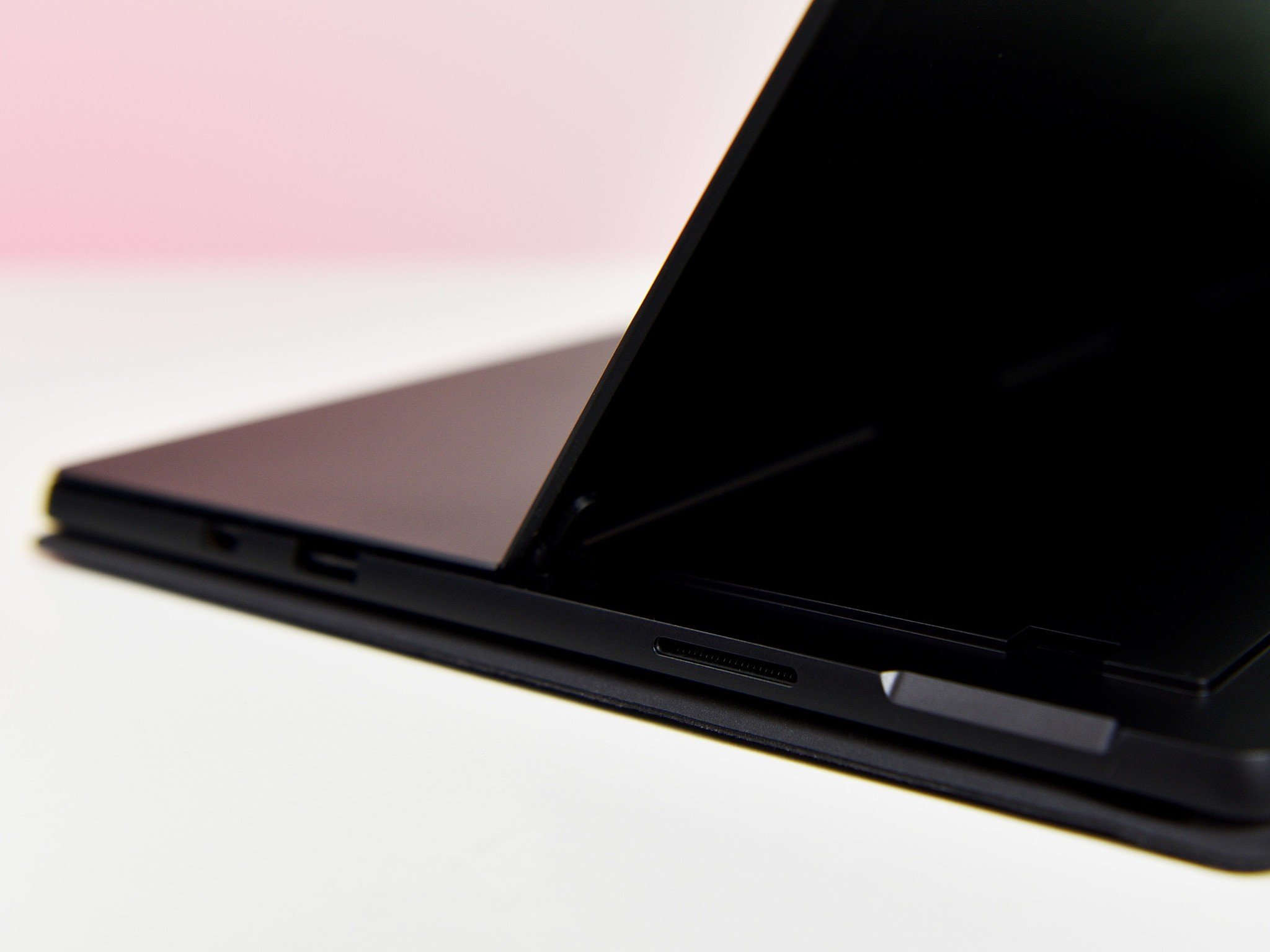
The finish makes Surface Pro 6 slightly thicker at the micron level (1 micron =0.001 millimeters) requiring a custom black enclosure to make sure all the parts fit together, but it's barely noticable. Additionally, all the ports and buttons are entirely blacked-out too. The result is stunning. The black is matte and is surprisingly very good at resisting fingerprints. While it's too early to tell if the black will scratch, Microsoft assures us the above process is meant to safeguard durability.
For ports, nothing has changed. Microsoft had been expected to jump to USB Type-C 3.1 instead of retaining its old mini DisplayPort, but that didn't happen. Users will have to make do with USB Type-A and mini DisplayPort. Microsoft cites ongoing confusion and enterprise reliance on Surface Connect as reasons to not go to USB Type-C – or the more powerful Thunderbolt 3 – but the excuse is starting to ring hollow in late 2018.
still brilliant
Microsoft Surface Pro 6 display

Microsoft keeps the 12.3-inch, 2736 x 1824 (267 PPI) Pixel Sense display for the Surface Pro 6 with a 3:2 aspect ratio. It is an IPS LCD with ten-point multi-touch and glossy edge-to-edge glass.
There are two color profiles including Enhanced (default) and sRGB, which has less contrast but is more color accurate, making it ideal for photography and media editing. Color accuracy is excellent at 99 percent Adobe sRGB and 76 percent Adobe RGB according to a color calibration test under the sRGB color profile.
There is no unevenness for LED hot spots (or "edge bleed") in this review unit (while LCD will also suffer from some light leakage at the edge when in Windows 10 and daily use, there is nothing discernable). The display bezels are the same as the Surface Pro (2017) – not to0 thick, but not radically thin either.
Overall, the Surface Pro 6's screen is excellent. It's near-perfect for color accuracy, touch works well, and the display brightness is outstanding with a peak of about 470-nits in the display center.
apps are getting better
Microsoft Surface Pro 6 Pen inking
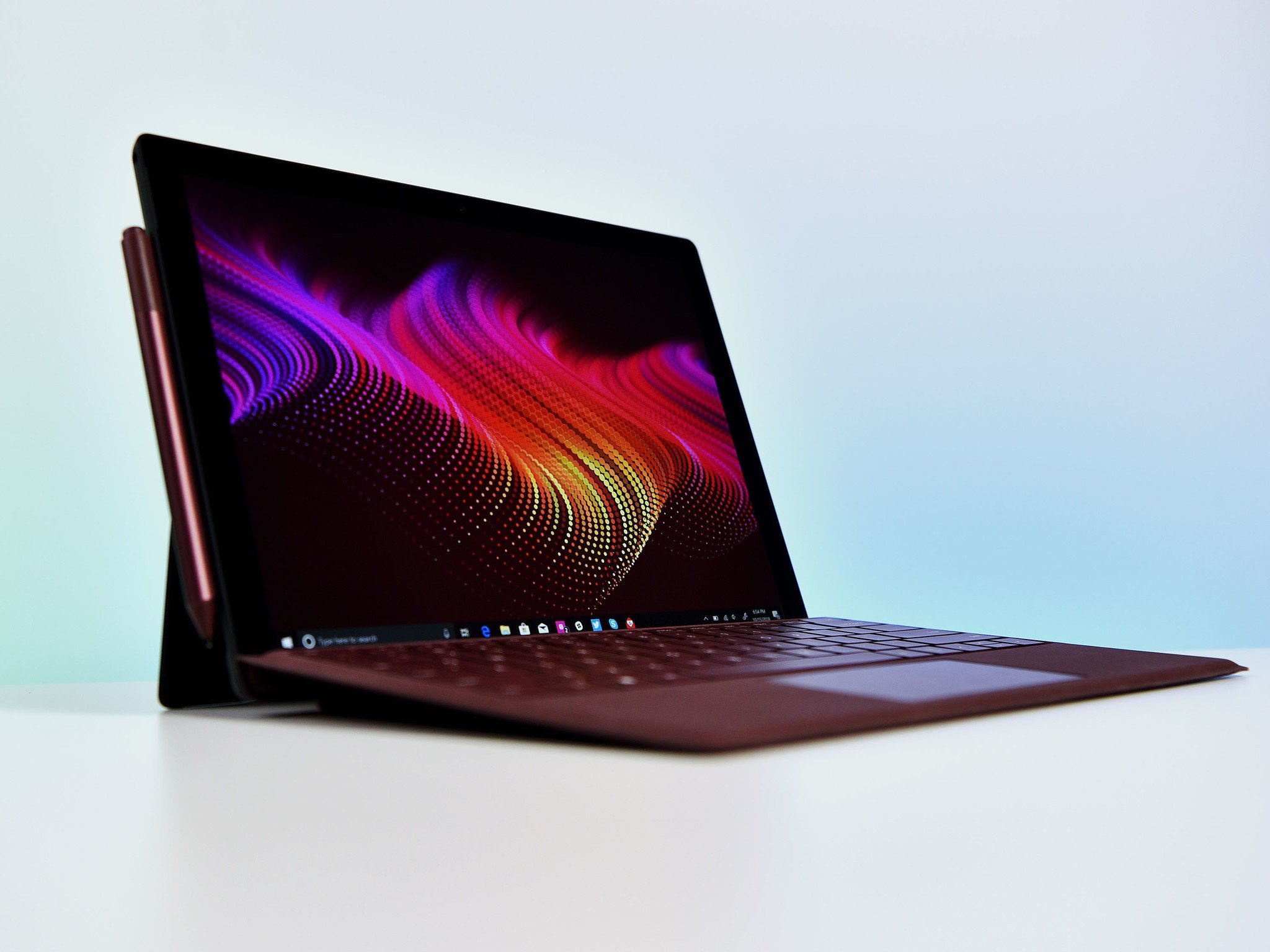
If you want to use digital ink on the Surface Pro, you need to shell out an extra $99 for the Surface Pen (although there are cheaper alternatives.
The pen still has the same 4,096 levels of pressure, supports tilt, rotation, and Bluetooth. Activation force – the amount of pressure required before the pen activates – is nine grams. Microsoft also maintains just 2.1 milliseconds of inking latency from last year's model due to the inking co-processor that's part of the Surface Pro 6 display. That co-processor connects the GPU to the screen's digitizer and helps speed up pen calculations.
Microsoft has steadily improved both the firmware for Surface Pen and made better apps with more significant support, such as Microsoft To Do, OneNote, and Sticky Notes 3.0.
In black but cheaper
Microsoft Surface Pro 6 Type Cover
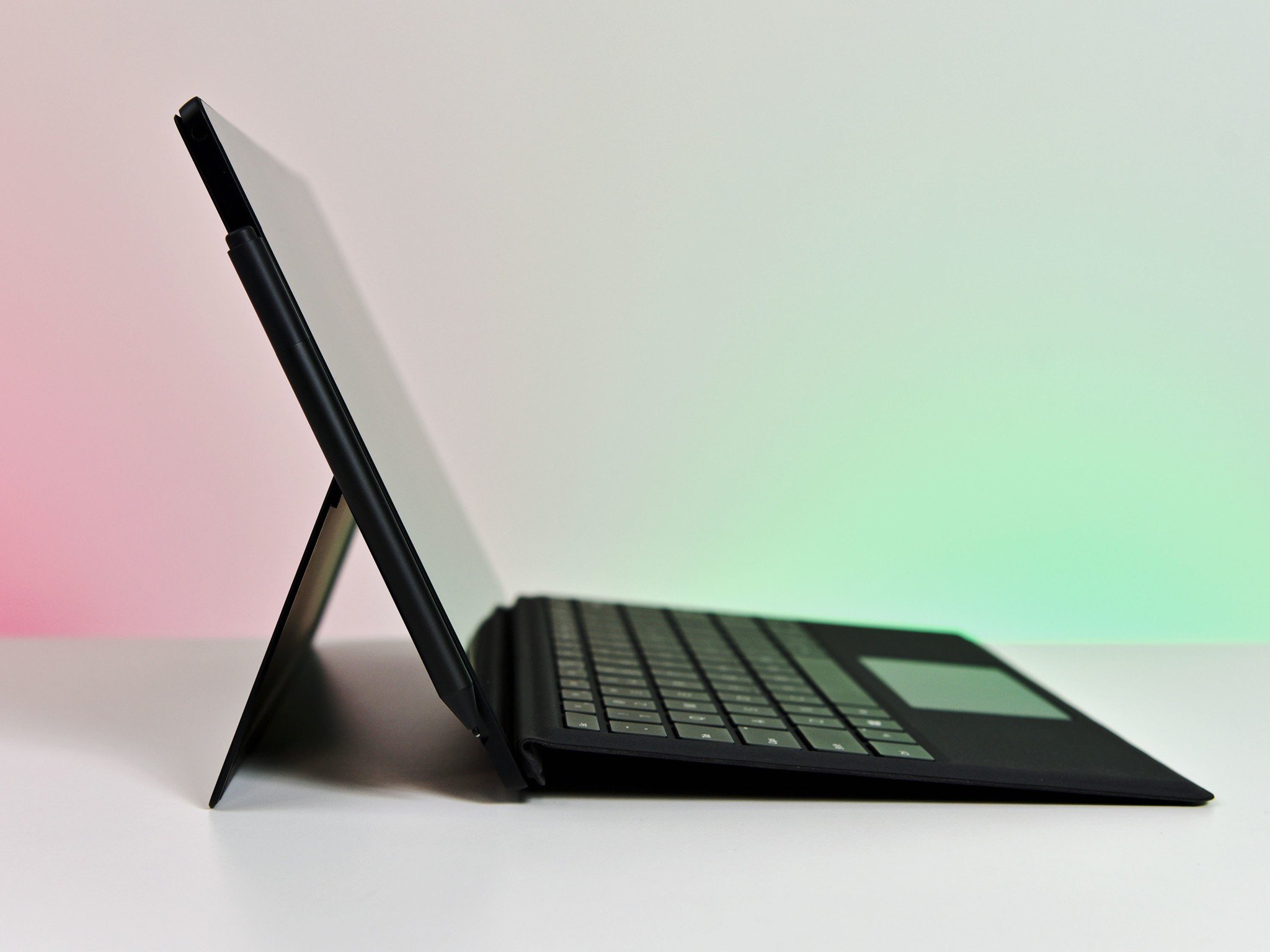
Unless you want a pure tablet experience with Surface Pro 6, which is not recommended, buyers will need to grab a Surface Pro Type Cover.
Again, nothing is new here compared to last year. If users want the black Surface Pro Type Cover, it will cost $129 extra. That's not cheap, but it is less expensive than the Surface Pro Signature Type Covers that feature the soft Alcantara fabric. Those $159 keyboards come in cobalt, platinum, or burgundy colors and all look great with the black Surface Pro 6. To be clear, the black Type Cover does not have Alcantara fabric.
Everything you need to know about Alcantara
The keys are three-stage backlit with 1.3mm of travel. The trackpad is Microsoft Precision and still one of the best found on any Windows 10 PC. Those upgrading from Surface Pro 4 can reuse their current Type Cover, but the redesigned ones from 2017 feature dedicated keys for the display brightness.
Seems faster
Microsoft Surface Pro 6 Windows Hello and resume

Microsoft is still king of the onboard camera for tablets and laptops. The 8.0MP rear camera is good enough for snapping a pic of a whiteboard or presentation. The front-facing 5.0 MP camera is easily the best on the market for any laptop or PC. It's sharp, colorful, and is perfect for Skype.
Flanking the front-facing camera are the Windows Hello infrared sensors for facial recognition. The technology remains the same, but Microsoft must have tweaked the performance and resume times for Surface Pro 6. It takes just two seconds now from the moment you hit the power button until you are logged into Windows 10 – which is remarkably fast.

Qualcomm and its ARM-based Windows PCs have touted the instant-on feature, but it's clear Microsoft is making huge strides with Intel-based systems. This speed improvement is worth mentioning because I found it extraordinarily noticeable compared to the Surface Pro (2017), or any other Windows 10 PC.
quad-core is here
Microsoft Surface Pro 6 benchmarks
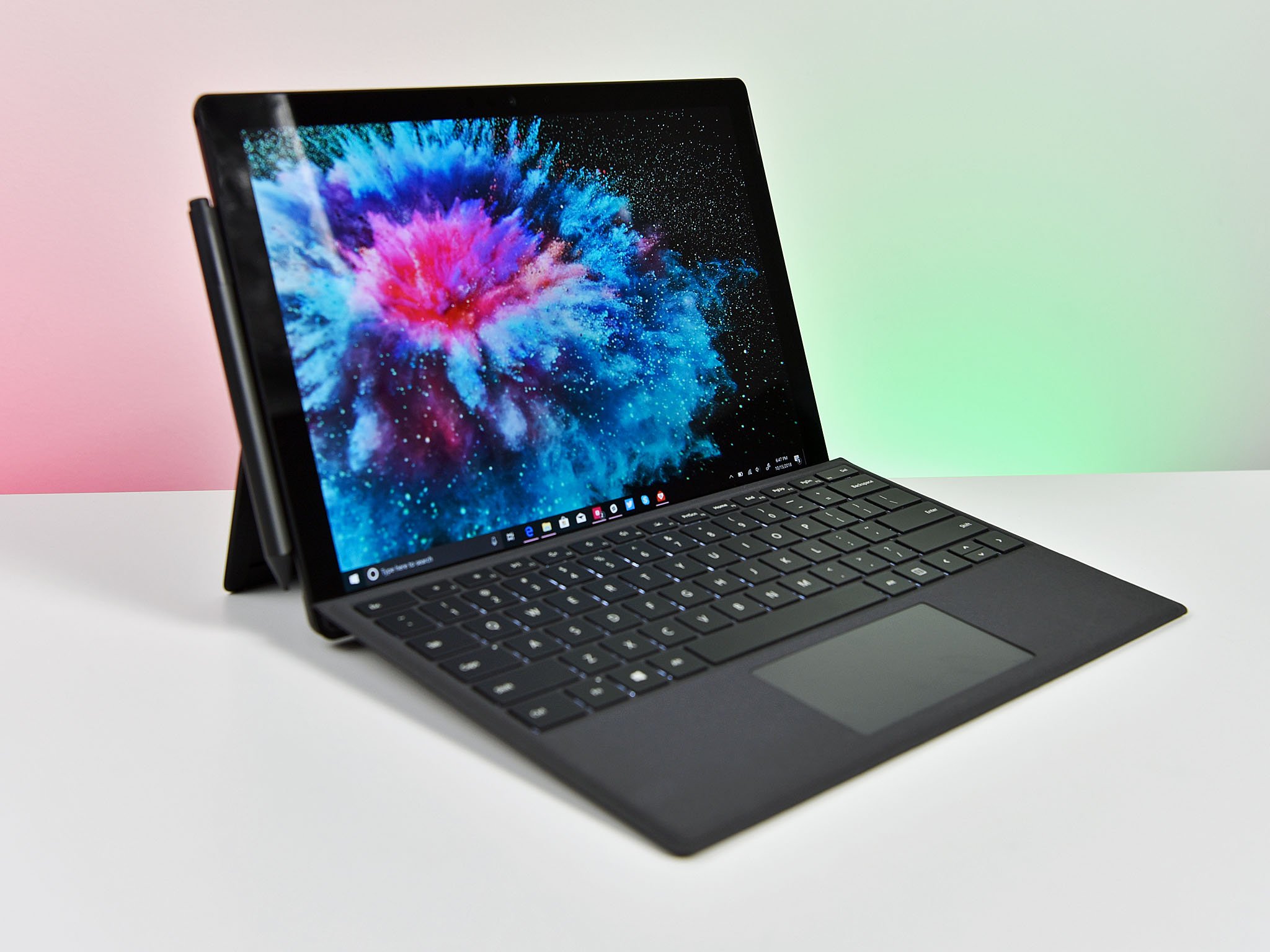
The big deal about the Surface Pro 6 is the jump to quad-core processors from the previous dual-core ones in prior Surfaces. Intel bumped its dual U-series processors (found in Ultrabooks) in late 2017, and Microsoft is now just getting on board.
*We have since added the Surface Pro Core i7 Geekbench scores to this review.
CPU
For synthetic benchmarks, the Core i5-8250U is outstanding, nearly beating last year's similar Core i7 model for single-core and obliterating the i7's multi-core performance.
Geekbench 4.0 benchmarks (higher is better)
| Device | CPU | Single core | Multi core |
|---|---|---|---|
| Surface Pro 6 | i5-8250U | 4,287 | 14,031 |
| Surface Pro 6 | i7-8650U | 5,037 | 13,864 |
| Surface Pro 5 | i5-7300U | 4,302 | 8,482 |
| Surface Pro 5 | i7-7660U | 4,513 | 9,346 |
| Surface Pro 4 | i5-6300U | 3,319 | 6,950 |
| Dell XPS 15 (9570) | i5-8300H | 4,822 | 16,203 |
| Dell XPS 15 (9560) | i7-7700HQ | 4,503 | 13,587 |
| Surface Laptop | i5-7200U | 3,725 | 7,523 |
| Surface Laptop 2 | i5-8250U | 4,203 | 13,233 |
A reasonable conclusion is that this year's 15W Core i5 Surface Pro 6 is close to 2017's 45W Core i7-7700HQ – a remarkable achievement.
GPU
While not as powerful as the Iris Plus 640 , the Intel Graphics UHD 620 is admirable.
Geekbench 4.0 OpenCL (higher is better)
| Device | GPU | Compute score |
|---|---|---|
| Surface Pro 6 i5 | UHD 620 | 36,516 |
| Surface Pro 6 i7 | UHD 620 | 35,074 |
| Surface Pro 5 | HD 620 | 20,688 |
| Surface Pro 5 | Iris 640 | 30,678 |
| Surface Pro 4 | HD 520 | 17,395 |
| Surface Laptop | HD 620 | 19,256 |
| Surface Laptop | Iris 640 | 31,010 |
| Surface Laptop 2 | UHD 620 | 35,473 |
| Surface Book | HD 520 | 18,197 |
| Surface Book | GTX 965M | 64,108 |
| Surface Book 2 | GTX 1060 | 138,758 |
The results may be surprising, but at least on Geekbench's OpenCL test, the Surface Pro 6 UHD 620 outperforms the Iris Plus 640 from last year.
SSD
Raw SSD speeds have never been a strength of the Surface line, and they tend to fall in the above average range but are never top performers. That's still the case in 2018, but the Surface Pro 6 does notably improve upon last year's model.
CrystalDiskMark (higher is better)
| Device | Read | Write |
|---|---|---|
| Surface Pro 6 | 1,632 MB/s | 814 MB/s |
| Surface Pro 5 | 847MB/s | 801 MB/s |
| Surface Laptop | 486 MB/s | 244 MB/s |
| Surface Laptop 2 | 1,509 MB/s | 811 MB/s |
| Surface Book | 1,018 MB/s | 967 MB/s |
Note that the speeds for Surface Pro 6 were with a 256GB SSD which was model SK Hynix BC501. The 512GB and 1TB models are likely to have better results due to having more channels (NAND flash chips) that run in parallel.
Testing the 512GB option for Surface Pro 6 yields similar read speeds as the 256GB model, but write did go up from 814 MB/s to 1,095 MB/s.
PCMark
Looking at PCMark Home Accelerated (where it uses the GPU) – which is an overall performance test - the new Surface Pro 6 also does well.
PCMark (Home Accelerated 3.0)
| Device | Score |
|---|---|
| Surface Pro 6 (i5) | 2,522 |
| Surface Pro 5 (i5) | 2,351 |
| Surface Pro 6 (i7) | 3,451 |
| Surface Pro 5 (i7) | 3,746 |
| Surface Laptop 2 (i5) | 3,451 |
| Surface Laptop (i5) | 2,720 |
As expected, this year's Core i5 Surface Pro 6 beats out last year's Core i5 model for PCMark Home Accelerated. But, due to the lack of Iris Plus the new Core i7 (3,451) falls behind last year's i7 (3,746).
For casual gaming, the Surface Pro 5 with Iris Plus gets around 52 frames per second (FPS) versus the Surface Pro 6 (Core i5) at 33 FPS. Still, comparing this year's Core i5 Surface Pro (33 FPS) to last year's Core i5 (25FPS), we can see a notable improvement. Finally, the new Core i7 Surface Pro 6 managed 42 FPS, which is a big bump from the i5's 33 FPS, but still behind last year's i7 at 52 FPS.
Overall, the Surface Pro 6 – even at the Core i5 level – is a substantial performer. The quad-core boost is considerable coming close to what the Dell XPS 15 Core i7 achieved just 18 months ago. Graphics are improved as well over last year's model, and the SSD is much faster.
All these improvements add up to a very fast, lag-free, and enjoyable experience with the Surface Pro 6.
all day use?
Microsoft Surface Pro 6 battery and thermals
Despite the doubling of cores and a massive increase in performance, we can conclude two things about the Surface Pro 6 when directly comparing to the same configuration in Surface Pro (2017):
- Battery life is substantially better.
- Temperatures are slightly cooler.
PCMark's battery rundown test aggressively loops through multiple tasks using the CPU and GPU including video conferencing, casual gaming, web browsing, and word processing. Display brightness was kept at fifty percent for both Surface Pros:
PCMark 8 Home Battery Accelerated
| Device | Time |
|---|---|
| Surface Pro 6 (i5) | 5 hours and 25 minutes |
| Surface Pro 5 (i5) | 4 hours and 30 minutes |
For those concerned that these numbers seem low, keep in mind that the PCMark test is very assertive at using the CPU and GPU. Casual usage with word processing, web browsing, and watching movies will yield significantly longer results. An initial conclusion is that the Surface Pro 6 should yield an extra 60 minutes of battery compared to last year's model. That should put casual usage well past the eight-hour mark depending on screen brightness.
For thermals during the PCMark battery rundown test, the Surface Pro 6 was consistently around four degrees Fahrenheit (F) cooler than the Surface Pro (2017). The Surface Pro 6 never felt hot with a peak temperature of 84 degrees F (29 degrees C) on the back, versus 89 degrees F (32 degrees C) for the Surface Pro (2017).
Considering both machines are fanless and rely on passive cooling it is evident Microsoft did an excellent job at reworking the thermals for Surface Pro 6.
Better than expected
The bottom on line on Microsoft's Surface Pro 6
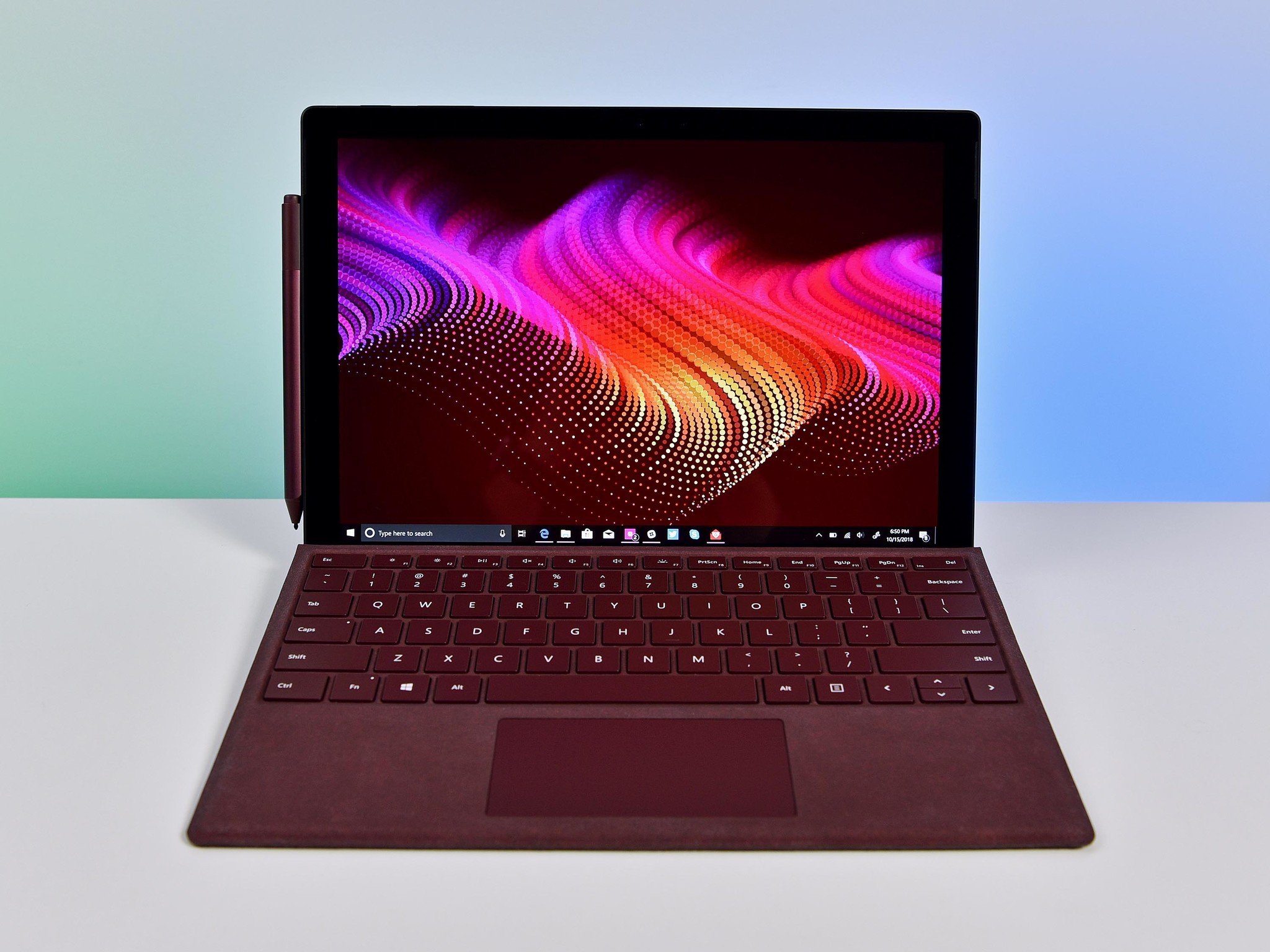
For fans of the Surface Pro, it is easy to dismiss the sixth generation as a rehash of last year's model with an option in black. That's a fair assessment, but it also misses the larger point that the CPU and GPU performance in the Surface Pro 6, combined with the improved battery life and faster resume times, result in a marvelous experience.
But let's call out the elephant in the room: those ports. Microsoft missed an opportunity to bring the Surface Pro 6 into the future with USB Type-C. Putting aside the more powerful Thunderbolt 3 controversy, a Type-C port would just have been more useful than mini DisplayPort as it can handle charging, data, and display. Microsoft even used the port on the Surface Go and Surface Studio 2.
Does the lack of Type-C matter? For some users, it is a deal breaker. For others, it's much ado about nothing. Ultimately, that's up to you
However, using the Surface Pro 6 is fantastic. The battery life, performance, and overall experience – like instant-on and no fan – are excellent. Plus, the black color looks tremendous.

Those with a Surface Pro (2017) will have very little reason to upgrade, but if you did you would appreciate the performance and battery improvements. Of course, rumors are that Microsoft will do a more substantial revision to Surface Pro sometime in late 2019 – likely including Type-C and more – making this year's purchase a tougher sell.
The Microsoft Surface Pro 6 is a minor upgrade, but the entire package is a major winner.
For most users, your best bet is to buy the model tested here ($1,450 with pen and keyboard). The Core i5 is perfect, and 8GB of RAM with 256GB of storage is fine for most people (there's microSD for expansion). Students, casual-to-moderate users, businesses, and even pros will be very pleased with the fanless Core i5 choice.
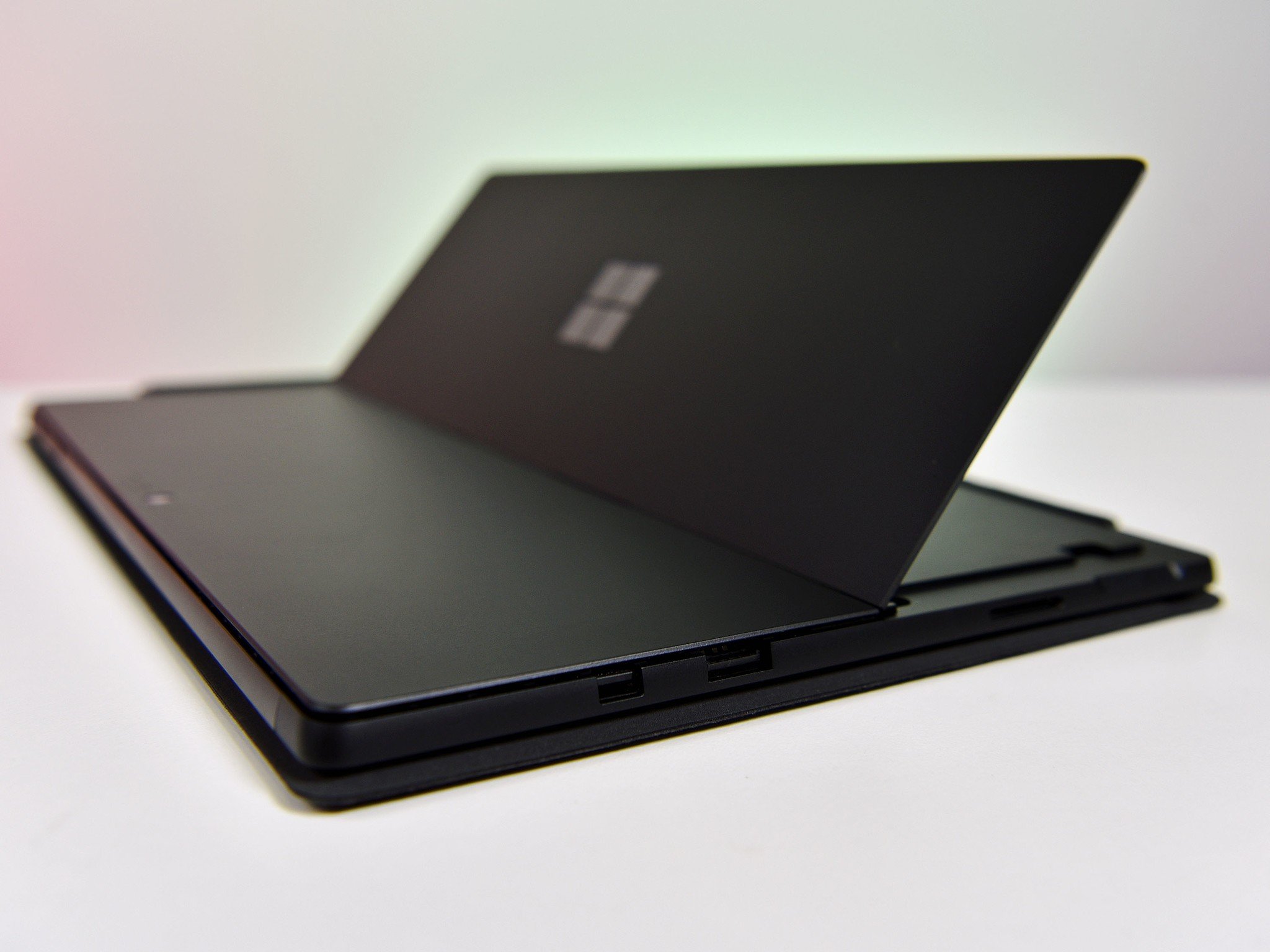
For $899, Microsoft sells the Surface Pro 6, but only in platinum, not black. If you want black, you need to get the $1,199 model, which doubles storage from 128GB to 256GB. That's a $300 premium for an extra 128GB of storage, which is crazy. Also, if you like the black Surface Pro 6, you can only get up to 512GB of storage – there's no 1TB option (right now).
You could also lament the downgrade to Windows 10 Home for Windows 10 Pro, but I don't think that's a big deal. Users who need Windows 10 Pro should pay for the license instead of Microsoft making everyone else subsidize the cost.
The Microsoft Surface Pro 6 is a minor upgrade, but the entire package is a major winner. Those who want the most flexible, powerful, and frankly fun PC around will be hard pressed to find anything better. Last year, I said the Surface "is the culmination of the previous releases with nothing but improvements all around. It's astonishingly beautiful, reliable, and delightful to use." That statement is more true than ever.
Give me a Type-C port and add LTE next time, and the Pro will be perfect.
Pros
- New CPU is substantially more powerful.
- Improved battery life; runs cooler.
- Black is awesome.
- Excellent build quality and design.
Cons
- No Type-C or Thunderbolt 3.
- No LTE option (yet).
- Odd pricing levels.

Daniel Rubino is the Editor-in-chief of Windows Central. He is also the head reviewer, podcast co-host, and analyst. He has been covering Microsoft since 2007 when this site was called WMExperts (and later Windows Phone Central). His interests include Windows, laptops, next-gen computing, and wearable tech. He has reviewed laptops for over 10 years and is particularly fond of 2-in-1 convertibles, Arm64 processors, new form factors, and thin-and-light PCs. Before all this tech stuff, he worked on a Ph.D. in linguistics, performed polysomnographs in NYC, and was a motion-picture operator for 17 years.
